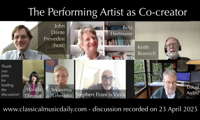 DISCUSSION: What is a work? John Dante Prevedini leads a discussion about The performing artist as co-creator, including contributions from Halida Dinova, Yekaterina Lebedeva, Béla Hartmann, David Arditti and Stephen Francis Vasta.
DISCUSSION: What is a work? John Dante Prevedini leads a discussion about The performing artist as co-creator, including contributions from Halida Dinova, Yekaterina Lebedeva, Béla Hartmann, David Arditti and Stephen Francis Vasta.
- Cecilia McDowall
- St Louis
- Weimar
- Hans Keller
- Claudio Ambrosini
- SOMM Recordings
- Willem Jeths
- Bernadette Speach
 VIDEO PODCAST: Slava Ukraini! - recorded on the day Europe woke up to the news that Vladimir Putin's Russian forces had invaded Ukraine. Also features Caitríona O'Leary and Eric Fraad discussing their new film Island of Saints, and pays tribute to Joseph Horovitz, Malcolm Troup and Maria Nockin.
VIDEO PODCAST: Slava Ukraini! - recorded on the day Europe woke up to the news that Vladimir Putin's Russian forces had invaded Ukraine. Also features Caitríona O'Leary and Eric Fraad discussing their new film Island of Saints, and pays tribute to Joseph Horovitz, Malcolm Troup and Maria Nockin.
Satisfyingly Impressive and Exciting
RON BIERMAN listens to Musorgsky, Rachmaninov and Elgar in San Diego
Rachmaninov's second piano concerto is among the world's most frequently performed and recorded classical works. It is immensely demanding of the soloist both technically and musically. Pianist Stephen Hough's 2004 live recording of the concerto won several prestigious awards, and he is one of its finest interpreters. Neither he nor conductor Lionel Bringuier disappointed in their appearance with the San Diego Symphony. Even at a faster tempo than most pianists attempt, Hough's technique was flawless in the difficulties of Rachmaninov's most spectacularly challenging moments.
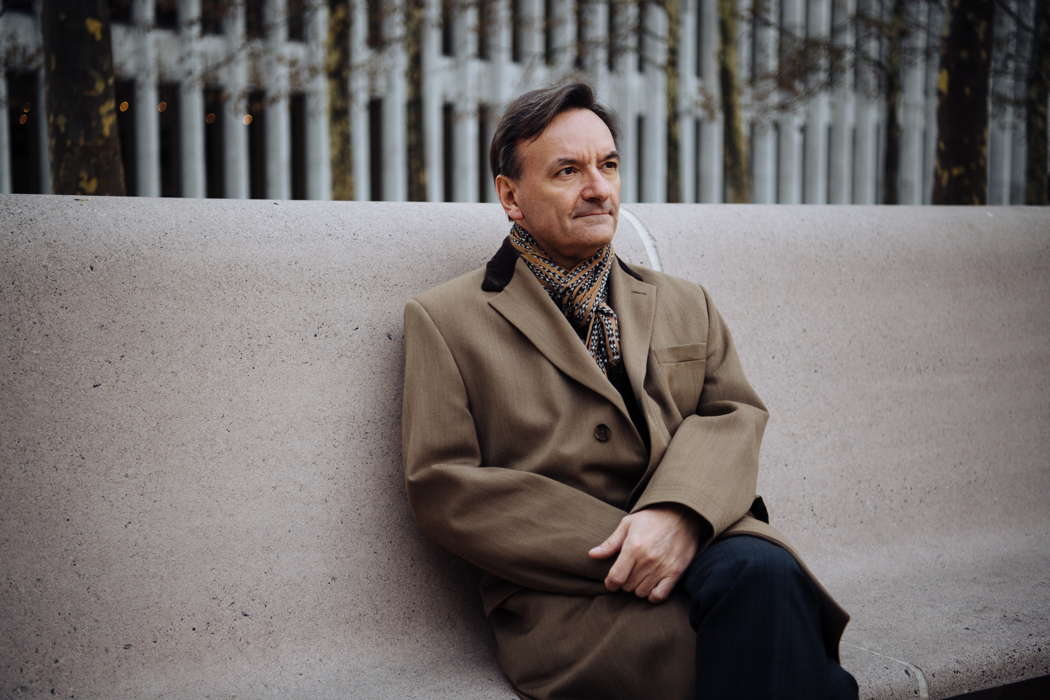
Stephen Hough. Photo © 2017 Jiyang Chen
For his part, Bringuier took full advantage of warm strings in the concerto's many lyrical orchestral passages, and managed tempo and dynamic changes adroitly for maximum impact as Hough's authoritative command made the most of every bravura moment.
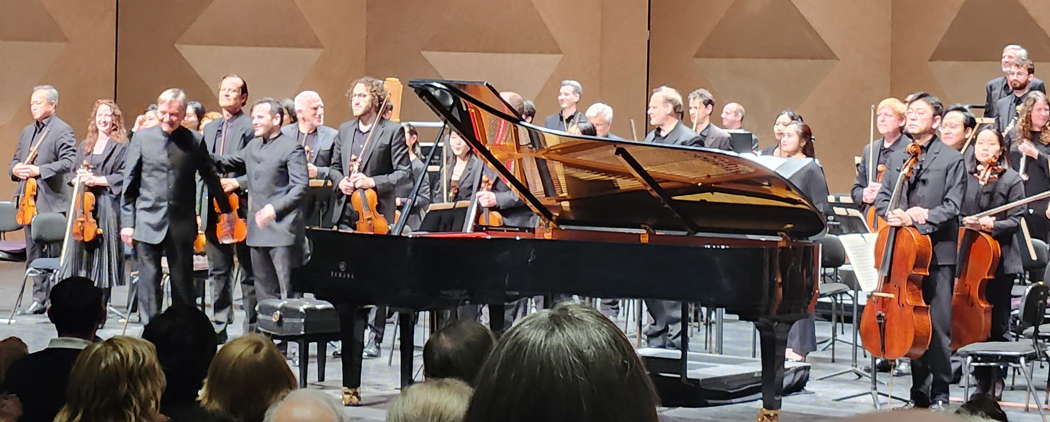
Stephen Hough takes a bow at San Diego Civic Theatre on 16 March 2024, with Lionel Bringuier and members of the San Diego Symphony Orchestra.
Photo © 2024 Ron Bierman
It was a satisfyingly impressive and exciting performance, although my favorite performances treat Rachmaninov's beautiful melodies with a bit more lingering affection, risking the disdain of those who believe them cloyingly inappropriate for 'serious' music.
The 1954 edition of the prestigious Grove's Dictionary of Music and Musicians had this to say about Rachmaninov:
His music ... is monotonous in texture, which consists in essence mainly of artificial and gushing tunes ... The enormous popular success some few of Rachmaninoff's works had in his lifetime is not likely to last, and musicians never regarded it with much favour.
Seventy years after Grove's assessment, Rachmaninov remains one of the most often performed classical composers while those who continue to ignore audiences also continue to wonder why atonality never caught on.
Mussorgsky's Night on Bald Mountain, the concert's opening work, ran into its own savage criticism until it was revised and orchestrated by Rimsky-Korsakov. Like Rachmaninov's concerto, it got a major boost from Hollywood. Disney's Fantasia of 1940 used animation to bring it and various other classical pieces to life. The film ended with a startlingly dark, eerie visualization of the tone poem that depicts ghosts and witches on brooms who rise over mountains to celebrate their 'Sabbath' with Chernobog, a frighteningly powerful demon.
The piece is often loud with swirling strings, active percussion and sinister brass, all appropriately chilling in this fast-paced performance. Quieter moments featured attractive woodwinds, and finally, as a somber bell heralds the end of the revelry, the spirits of darkness disperse, and calmer music heralds a brightening sky.
Elgar's Enigma Variations was the program's final work. A mystery theme, its source never definitively identified by scholars, precedes a series of variations, each a musical depiction of a person in the composer's life. Elgar explained, 'These personages comment or reflect upon the original theme and each one attempts a solution of the Enigma, for so the theme is called.'
The first musical portrait is that of his wife Alice for which he used a four-note motif he always whistled upon returning home. Each of the following dozen variations are built around a musical phrase or two that suggested a friend or colleague to the composer.
Elgar's depiction of his friend August Jaeger in the emotionally stirring ninth variation, 'Nimrod,' is the most familiar. (Nimrod is a biblical hunter, and 'jaeger' is German for 'hunter.) Elgar was recalling 'a long summer evening talk, when my friend grew nobly eloquent (as only he could) on the grandeur of Beethoven, and especially his slow movements.' The piece is often performed at solemn occasions, as it was at Princess Di's funeral. It was also used in the soundtrack of Dunkirk, an award-winning film released in 2017. A round of applause demonstrated appreciation of the stirring performance led by Bringuier.
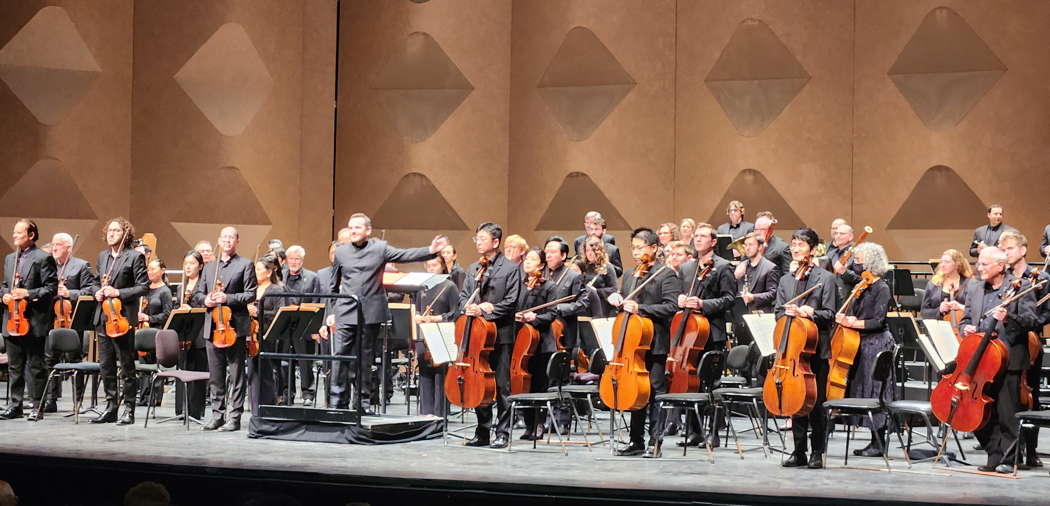
Lionel Bringuier and the San Diego Symphony Orchestra at San Diego Civic Theatre on 16 March 2024. Photo © 2024 Ron Bierman
The final variation is a self-portrait. Although written at a time when Elgar's musical future was uncertain, it is a heroic, self-confident final statement.
Conducting with quiet assurance, Bringuier once again brought out the richness of the San Diego Symphony's strings and the stirring power of its brass and percussion.
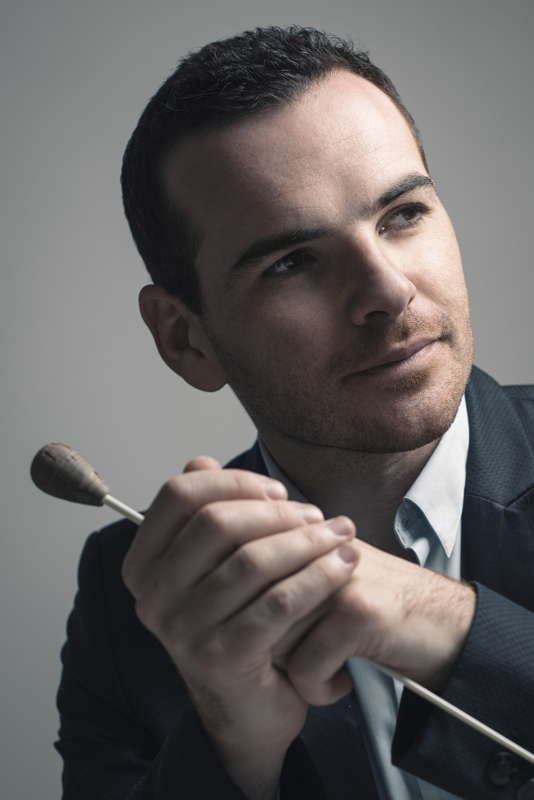
Lionel Bringuier. Photo © 2024 Simon Pauly
For those of us who may never tire of these three oft-played pieces, it was an enjoyable evening.
Copyright © 26 March 2024
Ron Bierman,
San Diego, USA



